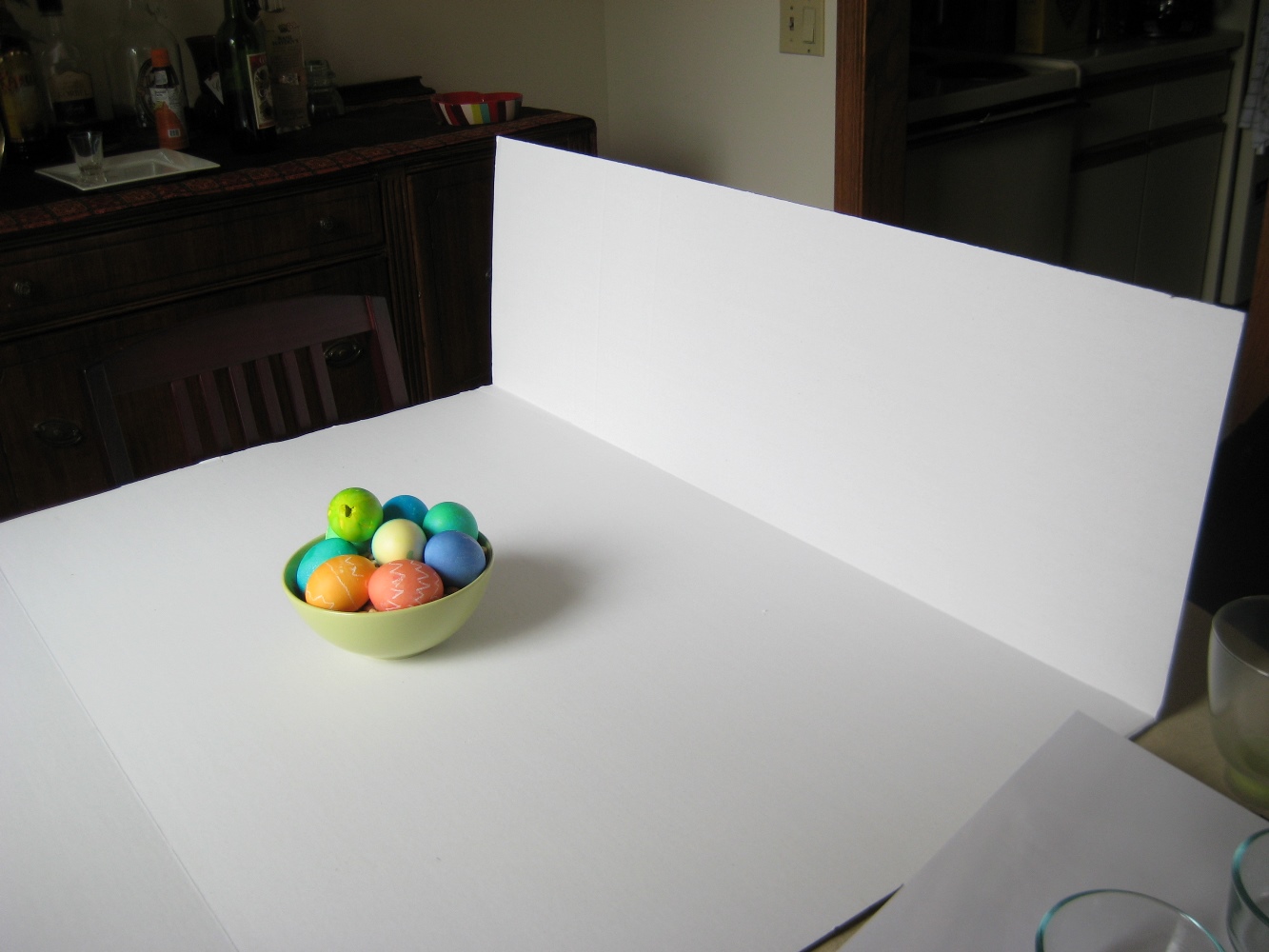'Tis the season, at the least here in the US, for domestic proprietors to brightly festoon their homes in full-size quantities of small, twinkling lighting. Whether you recollect them Christmas lighting fixtures, vacation lighting fixtures, or just a a laugh excuse to run up the power bill, this article will surrender the hints you need to take excellent shots of outdoor holiday lighting fixtures and mild shows.
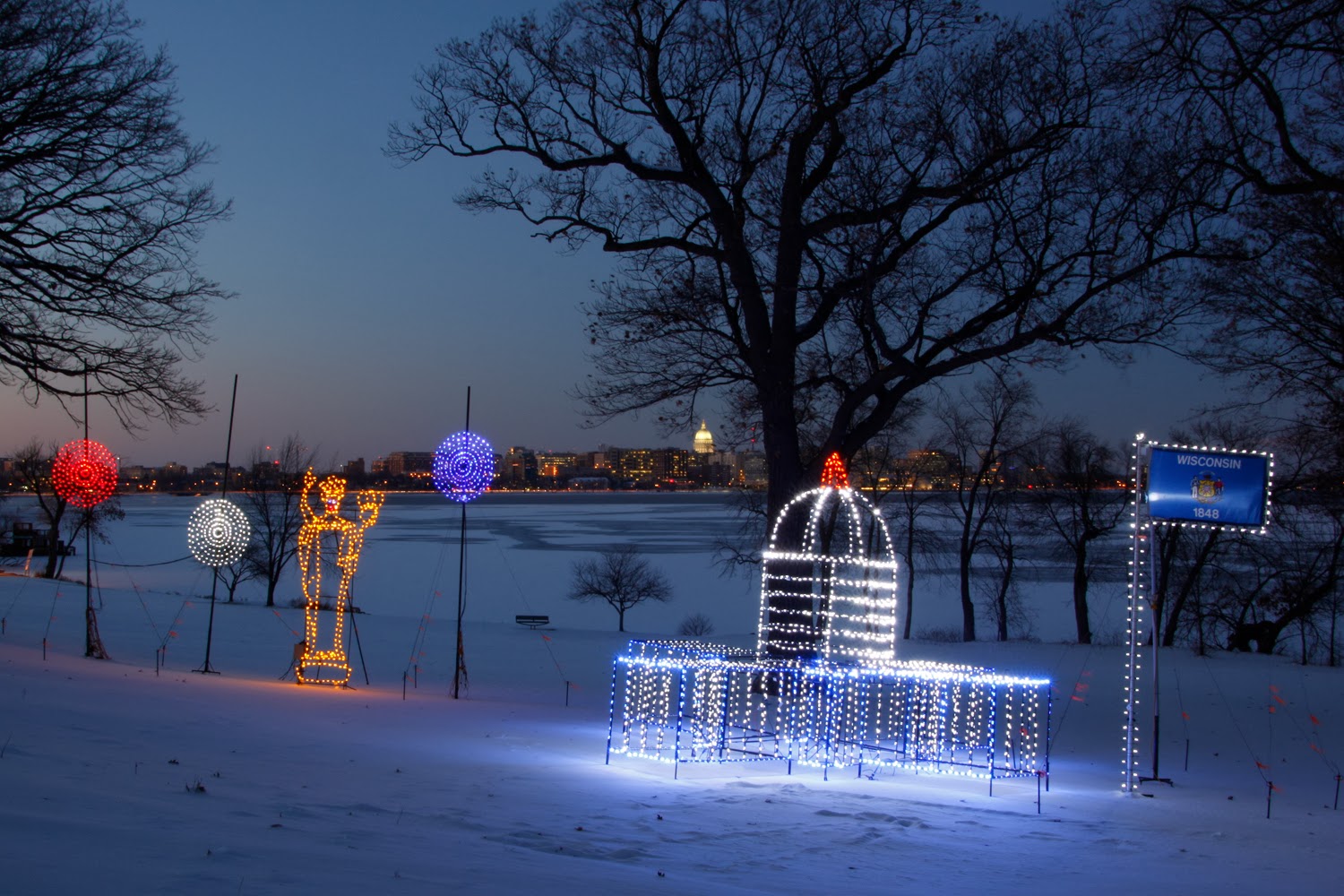
Equipment
A tripod is a should for tack-sharp night time photos, and a far flung shutter launch is useful. (If you do not have a faraway, you can use the 2-2nd or 10-2nd countdown characteristic in your camera. Corded remotes, but, are sincerely cheaper and worth the few bucks to choose up. Read greater approximately them here.) You can use a point-and-shoot digicam on night or long publicity settings, but you may have the maximum control over the final picture if you shoot with a DSLR camera.
Settings
I choose to shoot holiday lights in aperture precedence mode at ISO 100 with a slim aperture, like f/22. This can create a starburst effect, turning every tiny light right into a miniature megastar. (Read more approximately how to create starbursts in my visitor submit over at Digital Photography School.) Even in case you do not get full starbursts for every light, f/22 will assist accentuate the glow.
I actually have determined that Christmas lights regularly appearance exceptional when shot a bit underexposed, as you still want some thing of a 'night time' look to the very last image and do not want your digicam's sensor picking a shutter speed in an effort to make the complete image appearance as vibrant as day. To that stop, I suggest using exposure repayment and underexposing your photo by one complete stop. (You can discover the way to try this on most factor-and-shoot cameras if you appearance deeply enough into the menus.)
The different alternative is to shoot bracketed and have the digicam take a sequence of images at extraordinary exposure repayment values. If you are the usage of this selection, I advise beginning with the values of -2, -1, and 0. This will give you a range of options to pick out from later.
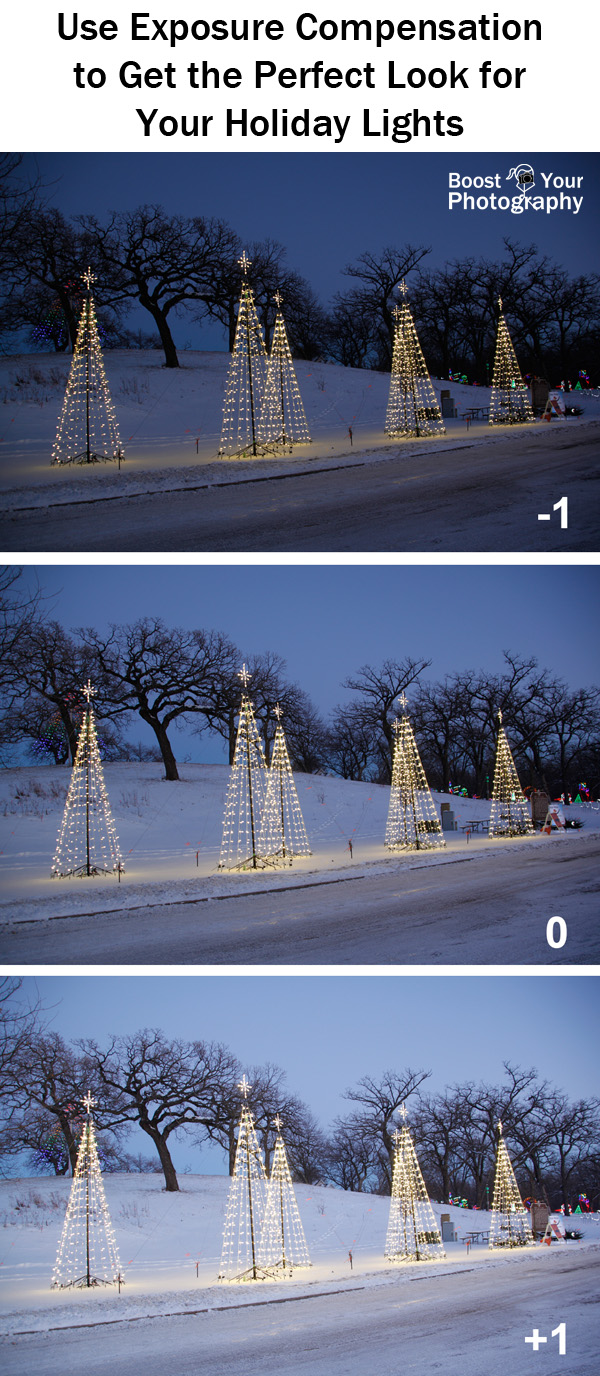
Finally, you could want to don't forget taking your white stability (WB) off of Auto. If you shoot in RAW (or RAW jpg), then you may go away the WB on Auto and select the look you like fine in put up-processing. If you shoot in only JPEG, however, I endorse converting your white stability to tungsten or fluorescent. These will keep the skies blue, render the colors in the lighting as it should be, and no longer add a warm yellow or daytime glow to your snap shots. You may additionally need to shoot a series of pix at exclusive white balances after which determine. The set of pictures beneath had been shot consecutively the usage of a tripod, and the white stability changed into the best variable changed. You can see that the tungsten and fluorescent settings hold the snow and the houses white, whilst the opposite settings impart a yellow-orange glow to a great deal of the scene.
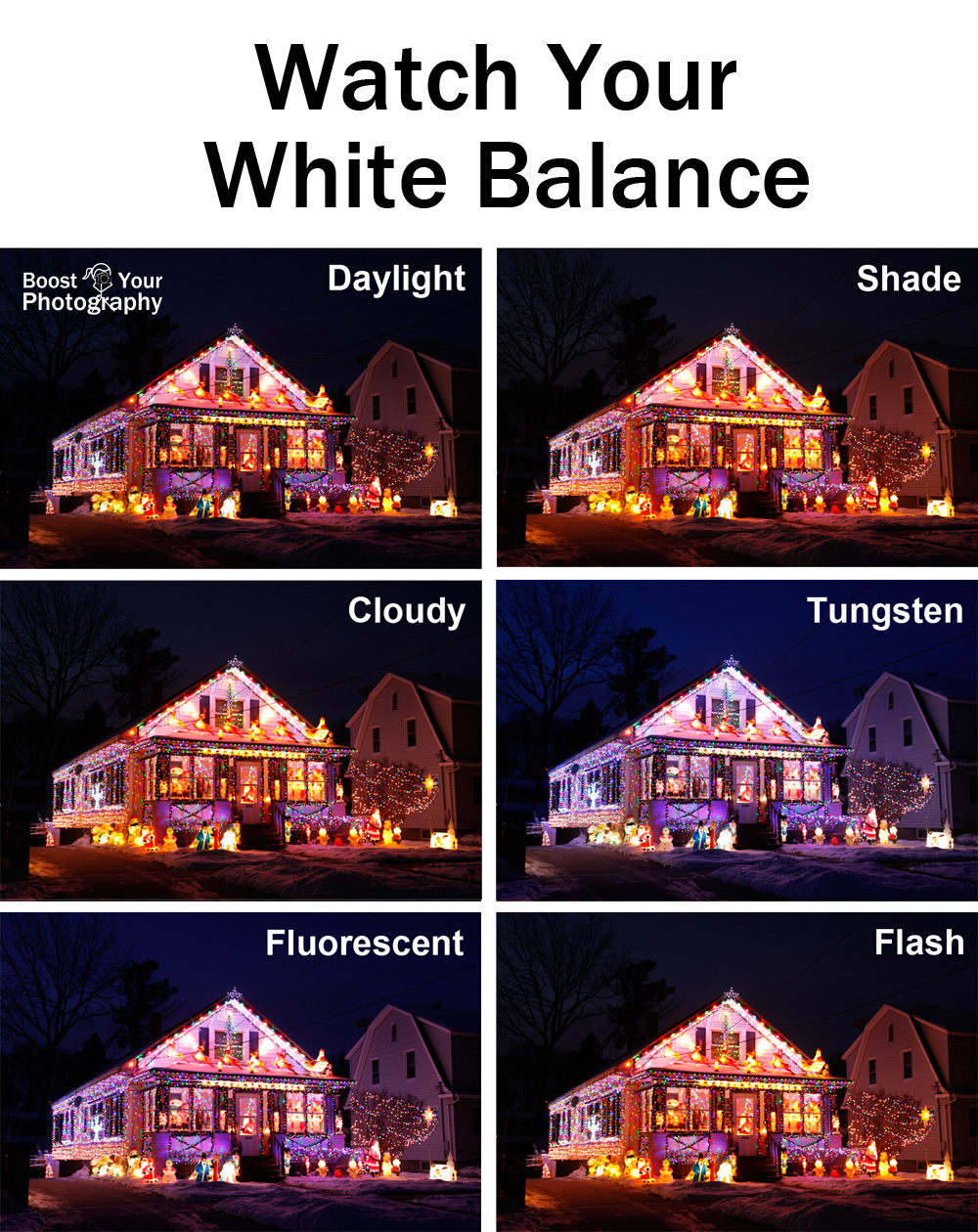 |
| Comparison of White Balance (click on right here to peer large model on Flickr) |
Timing
Timing is the whole thing for making it an iconic vacation lighting shot and now not just every other photograph. The key is to take your snap shots for the duration of the blue hour. The blue hour is the period of time (lasting about an hour) that happens shortly before the sun starts offevolved to rise in the morning and soon after the solar has set at night time. During the blue hour, the sky becomes a deep blue color that serves as an excellent evaluation to the glow of Christmas lighting. Your digicam will see a document this blue coloration deeply and extra vibrantly than it may seem in your eyes, so that you can preserve capturing even after the sky has started out to look 'black' to you.
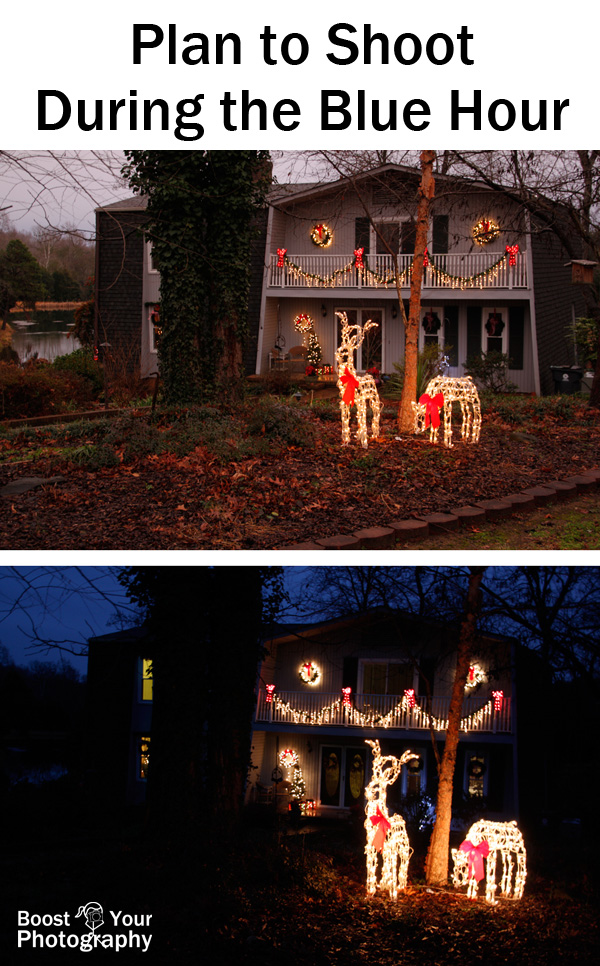 |
| These pictures were taken handiest 15 minutes apart. |
You also want to try and shoot at some stage in a night with clear skies. A clean sky permits for that deep blue colour, unfiltered. Scattered clouds make for superb sunsets however now not for first rate blue skies. A absolutely overcast sky will genuinely appearance pretty a bit yellow or orange, as it will reflect returned the light pollutants from any surrounding towns or urban areas. The other advantage of clean skies is which you might also be able to report stars, moon, or planets at the side of your holiday lighting fixtures.
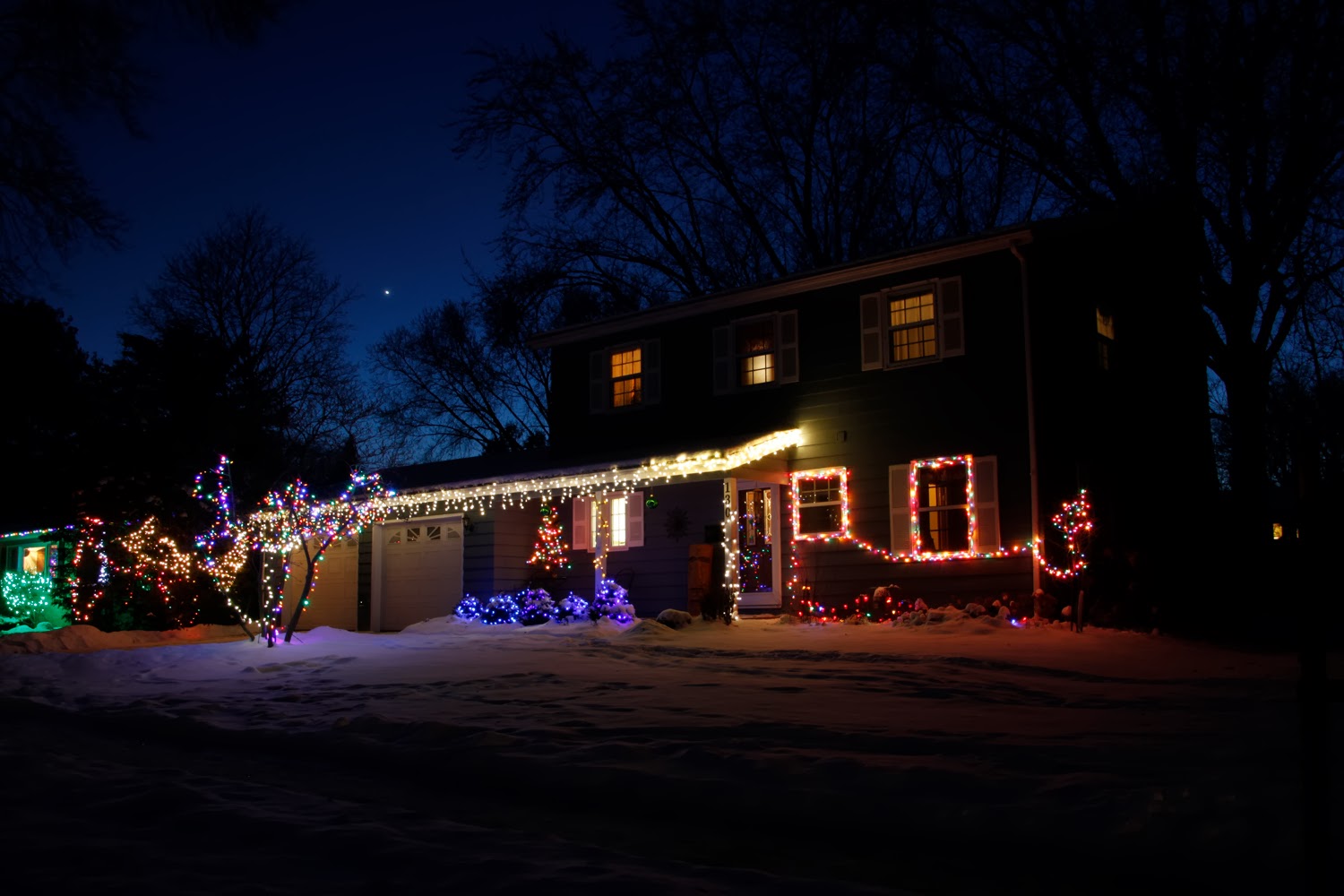
There are many easy ways to figure out your timing for such shots. You can use a site like Blue Hour Site to get approximate timings for the blue hour in your area, or you can use a site like Time and Date or the Photographers' Ephemeris to determine the sunrise and sunset times. I have found that 15-20 minutes after sunset is the beginning of the best time for shooting holiday lights against stunning blue skies.
Composition
There are an endless quantity of approaches to photo and display off Christmas and excursion lights. The most conventional, of path, could be a straight on or simply off-focused architecturally pushed technique, wherein you encompass the complete house and are shooting from tripod or eye-degree. If you want the partitions of your house to appear instantly, take the picture from farther away (like throughout the street) and zoom in on the house. This will keep away from the distortion common in structure if you are too close to the constructing you're capturing.
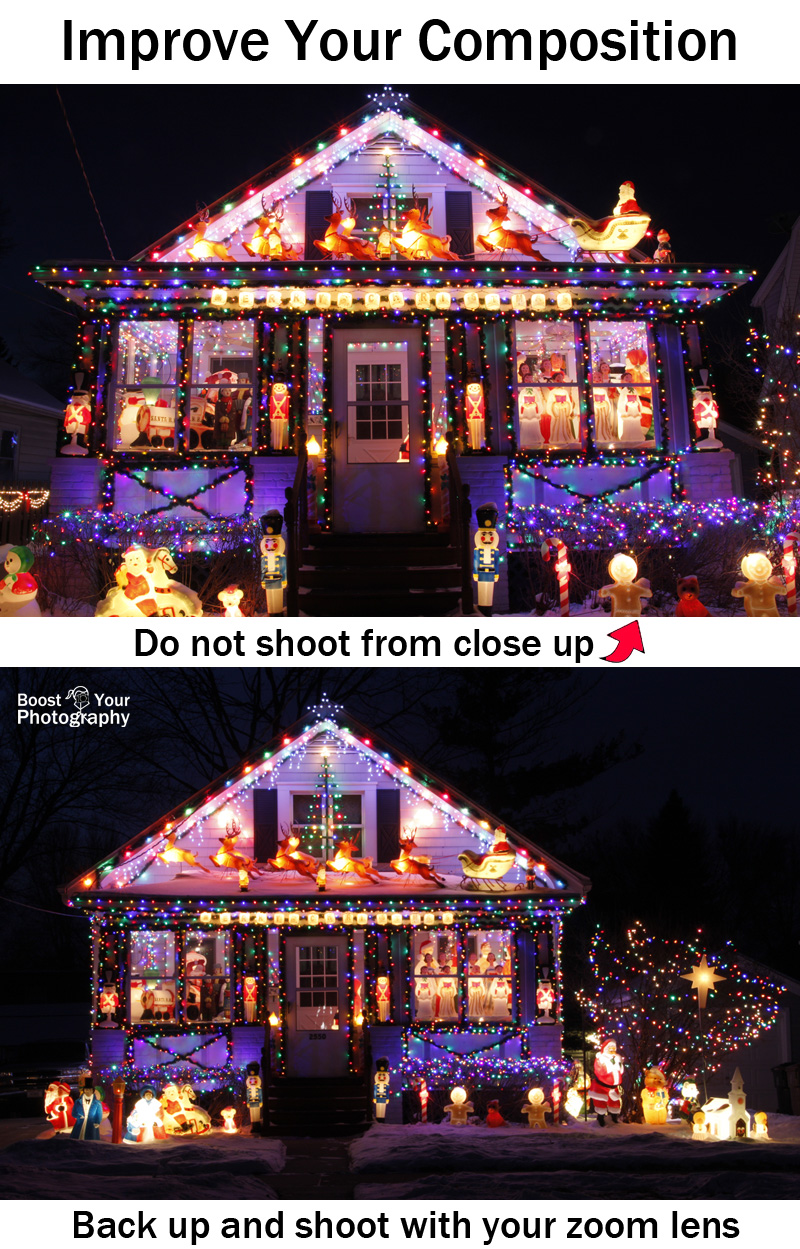
You can also go for a less traditional look. Rather than such as the whole house, pick a particular phase or vicinity of hobby. Narrowing down the point of interest helps the viewer to look and admire all the information gift inside the scene, which might be misplaced in a broader composition.
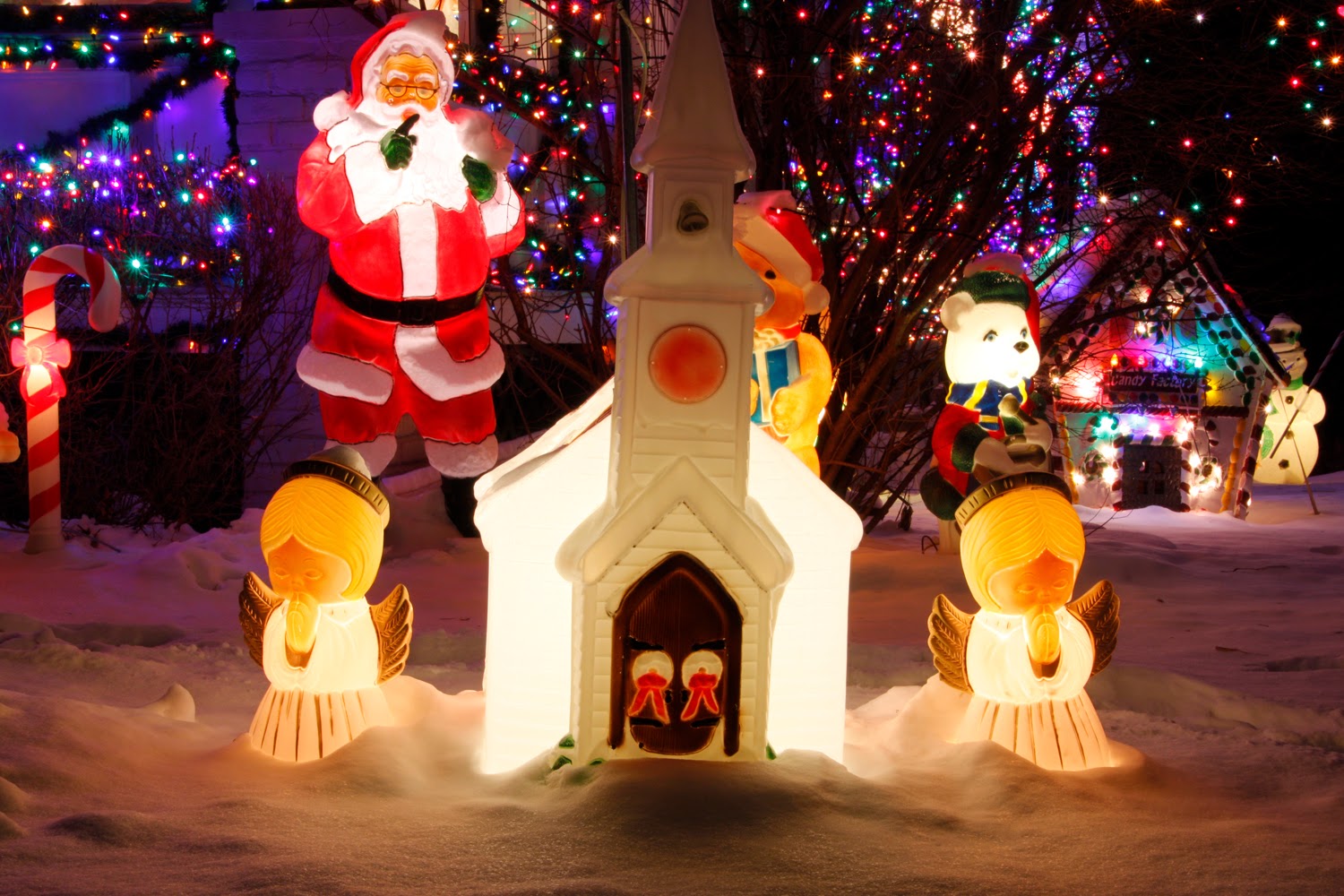
Think approximately adding other styles of lighting into the shot as properly. For homes on busier streets, you could need to shoot a much broader factor of view and consist of the mild trails of passing cars. These more lights will upload interest and a experience of movement to the image.
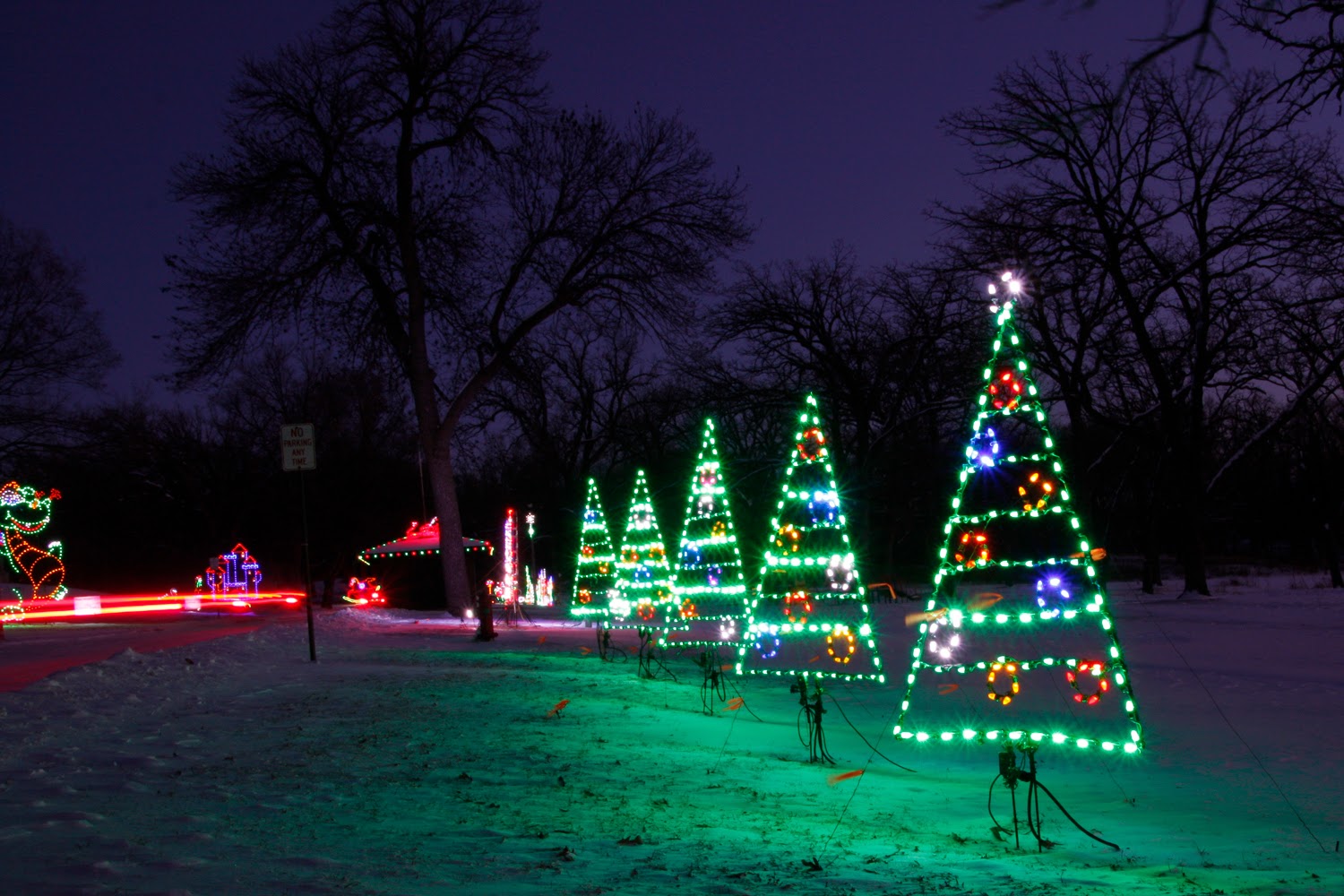
Finishing Touches for Houses
If you really want an above-and-beyond Christmas or vacation lighting fixtures shot, there are a few finishing touches in terms of lights and lighting fixtures. (A sparkling dusting of snow is continually favored too.) If you want your own home to look warm and welcoming, you should switch on the interior lighting in order that the home windows glow brightly. This additionally applies to porch lighting or street lamps. Their warm sparkling will upload to the general atmosphere of the very last photo.
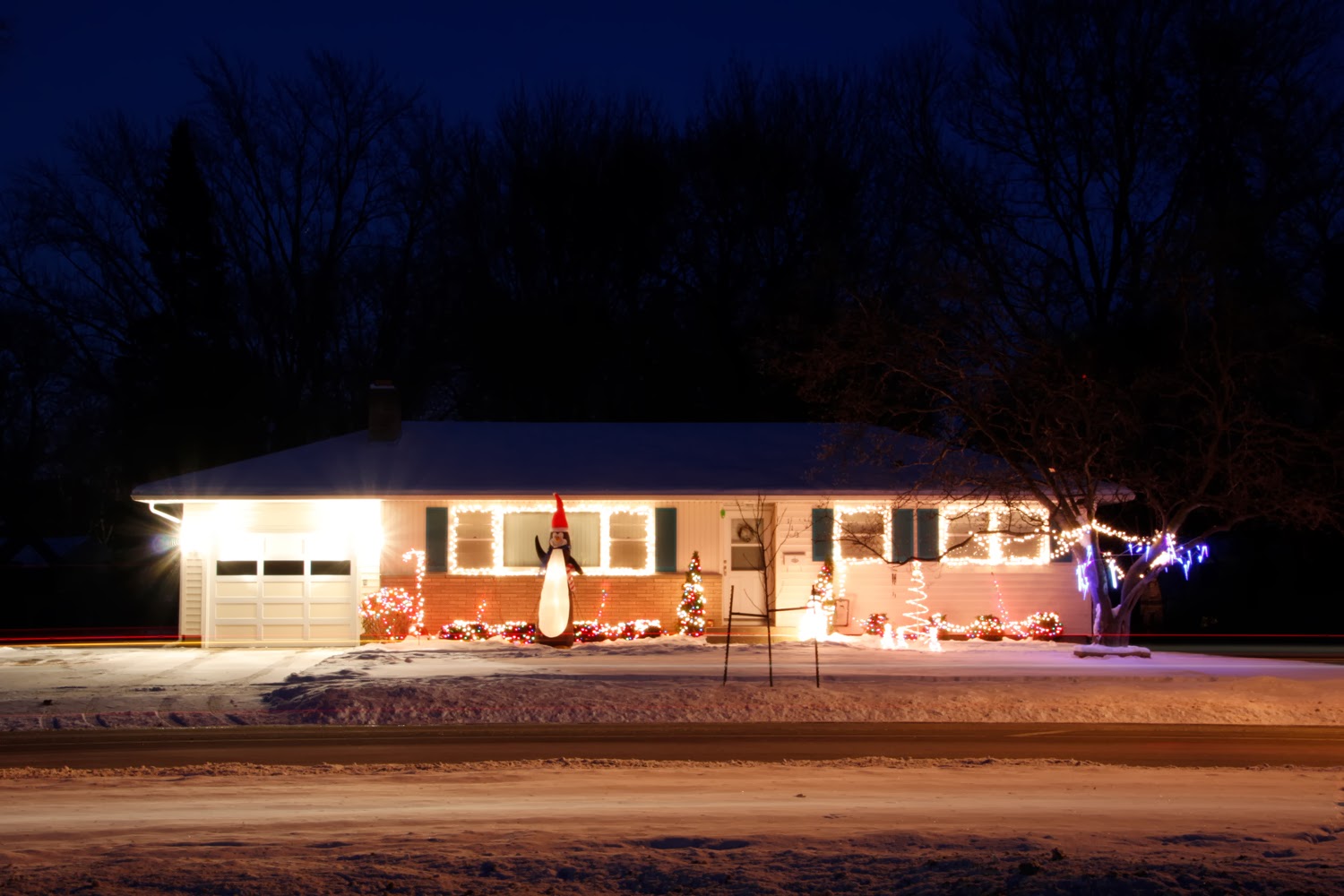 |
| Here the storage lighting are too vibrant, but the indoors lighting fixtures add a warm glow. |
Consider, however, turning off or temporarily disabling any flood lights or movement sensor lights that do not add to the overall composition. Flood lighting fixtures lights a house may add to the holiday impact, however shiny movement lighting streaming out out of your storage will simplest blow out within the photograph and make everything too brilliant, as in the photo above.
These appear to be nit-picky sorts of matters, but, as you could see from the examples, they could make a large impact on your standard photo.
Summary
Christmas and holiday lights are a photographic gold mine this time of year. If you take a bit bit of time to plan out your shot (shoot during the blue hour, turn on the interior lights, and produce alongside your tripod and far off), you'll locate it clean to seize memorable and delightful photographs of your favorite lighting presentations. Enjoy!
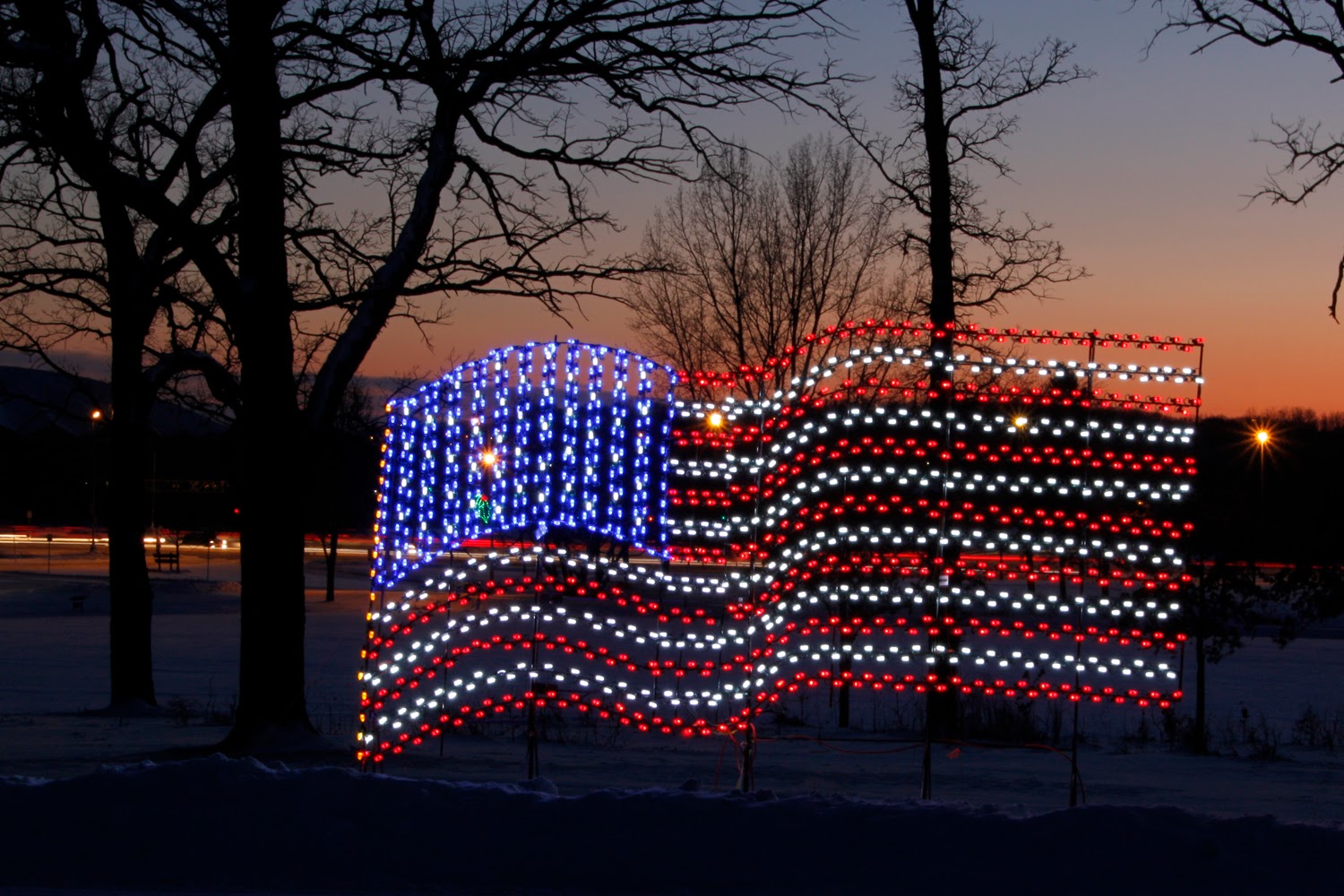

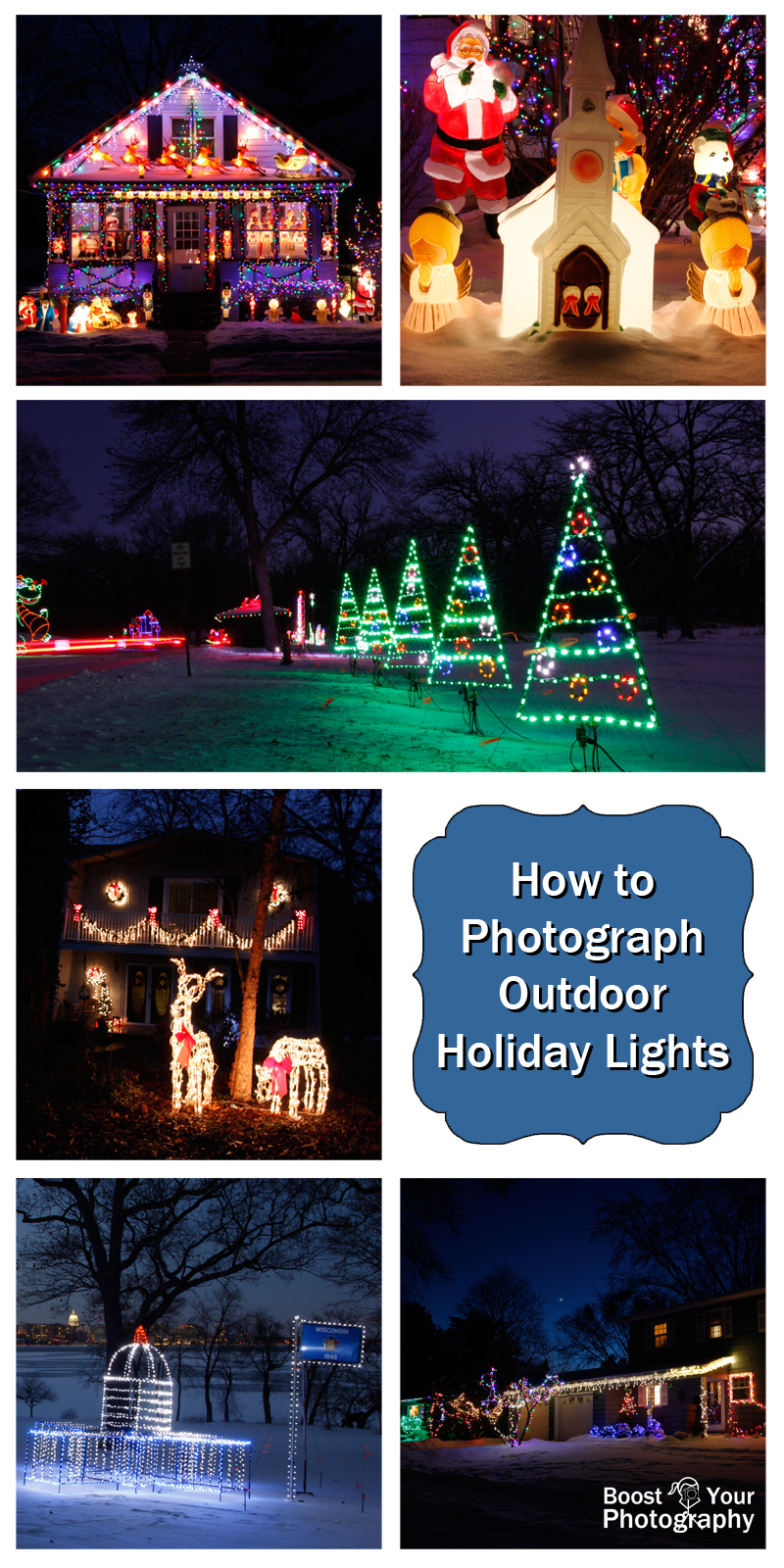
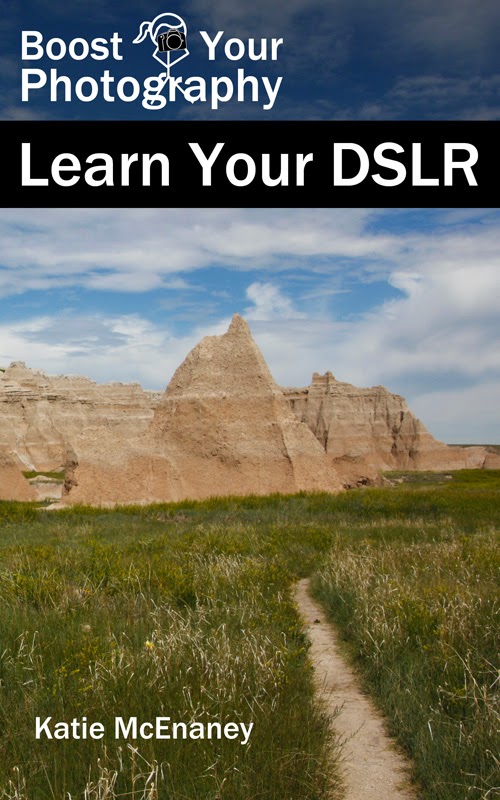
Boost Your Photography: Learn Your DSLR is now to be had from Amazon. Get the maximum out of your digital camera with realistic advice approximately the technical and innovative factors of DSLR photography that will have you ever taking lovely images right away.




